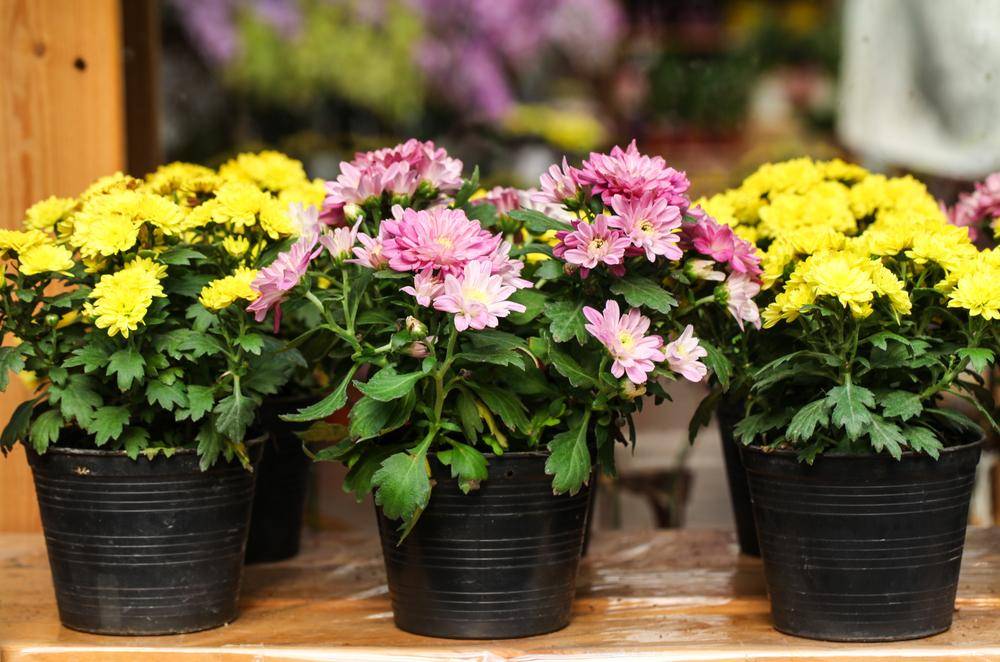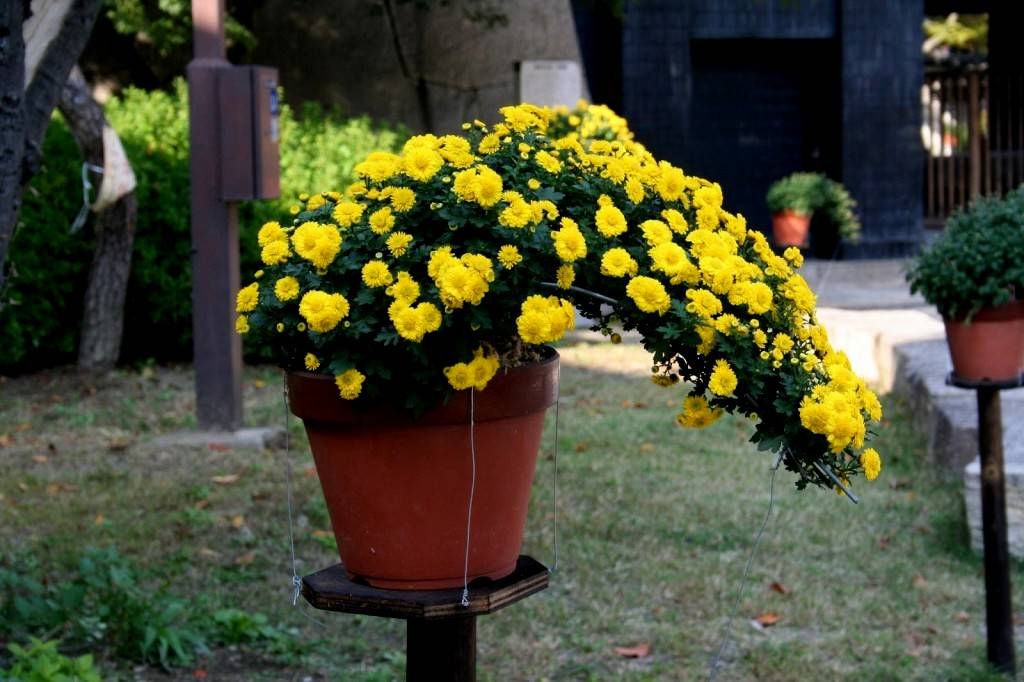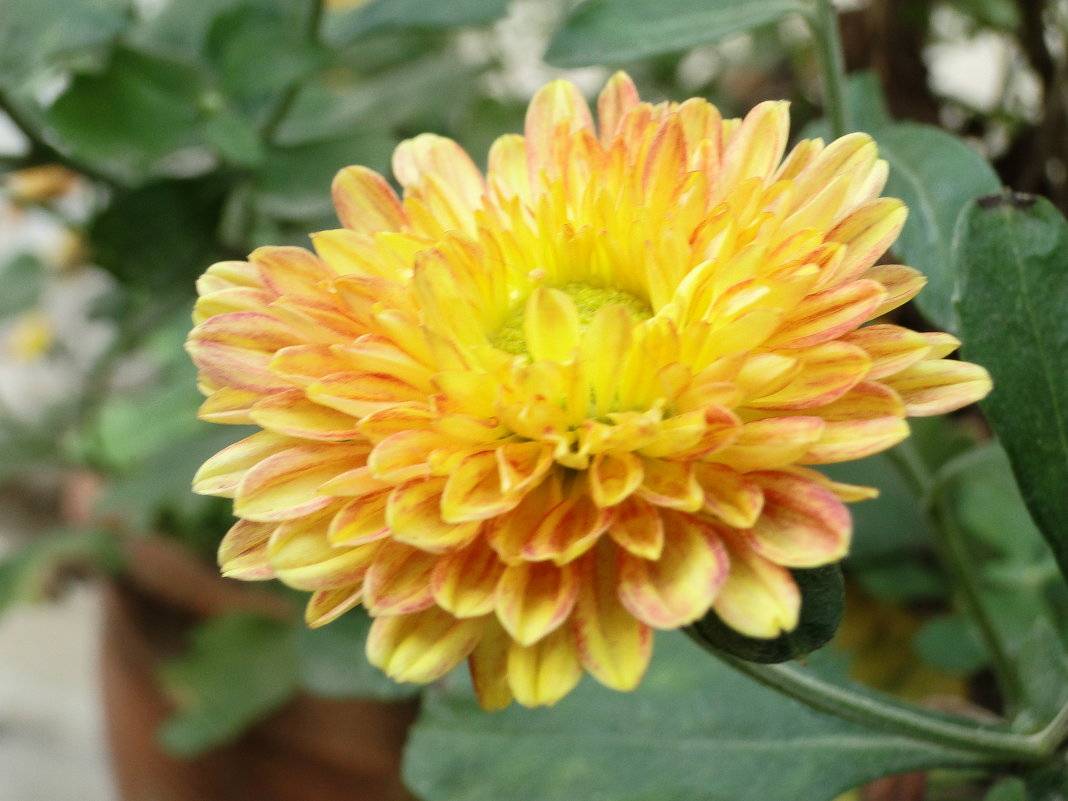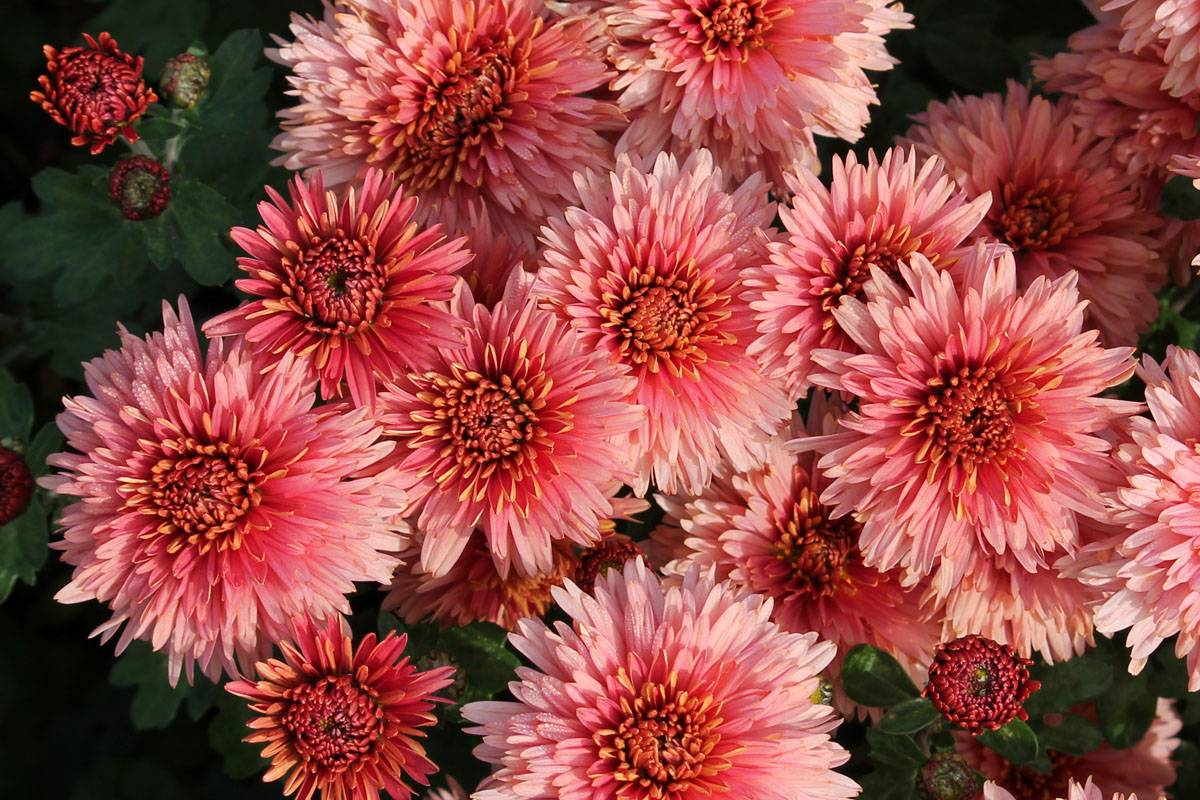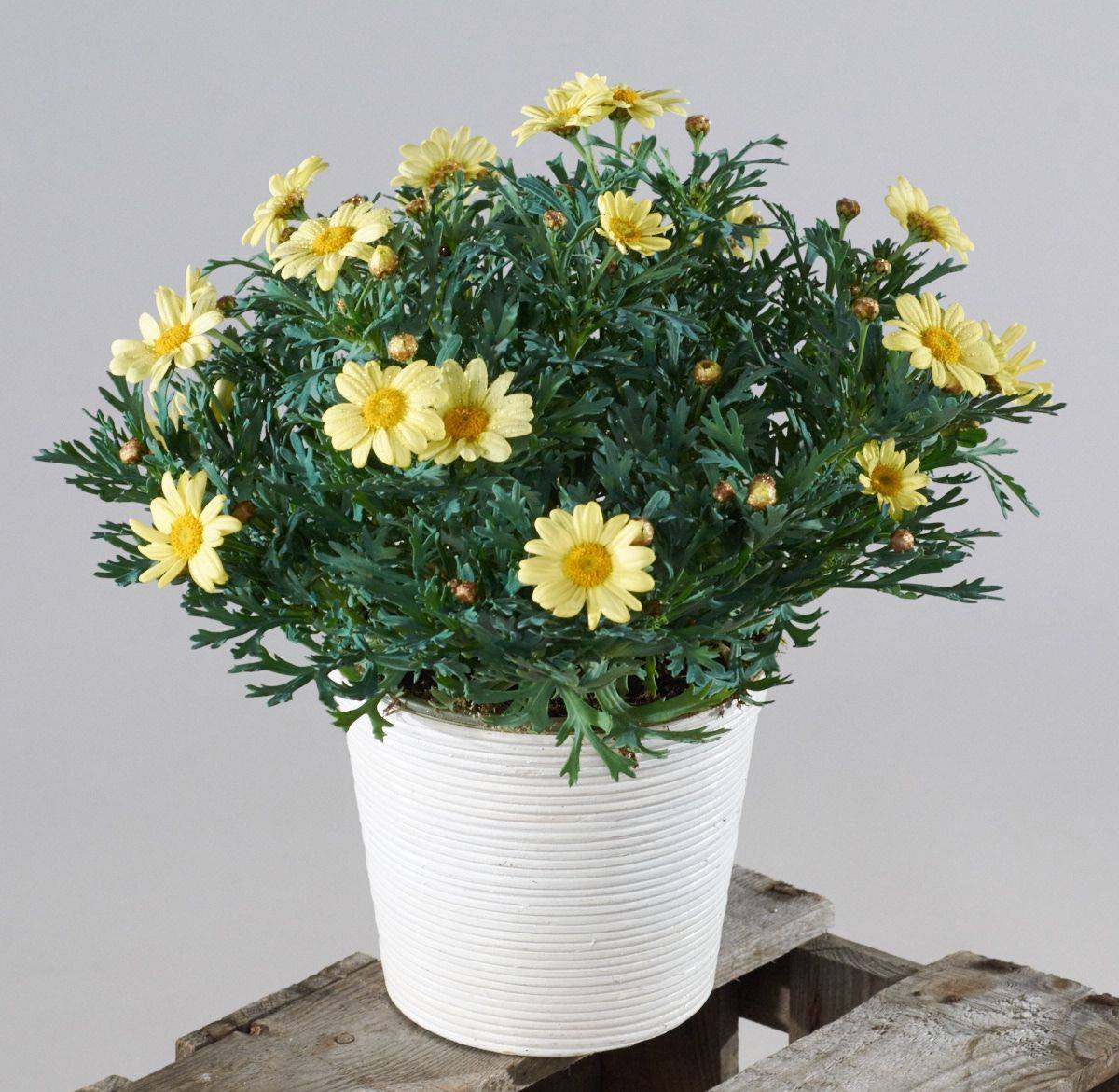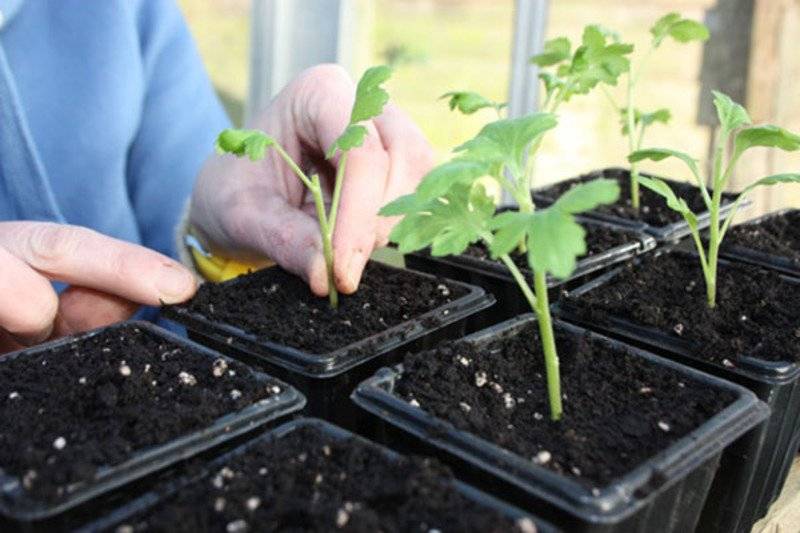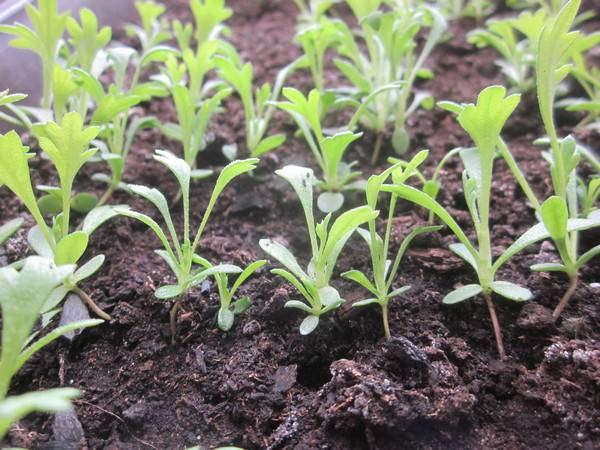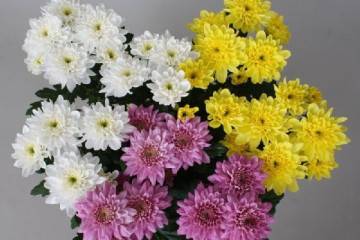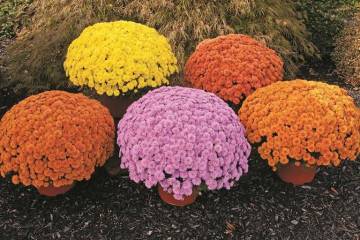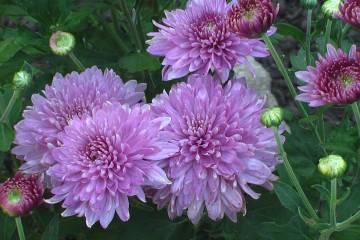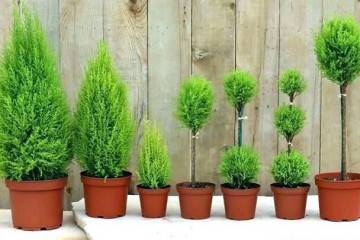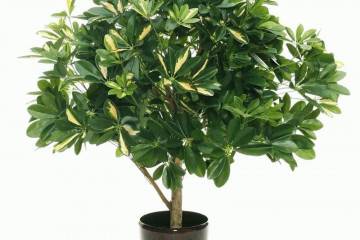Chrysanthemum in a pot - home care
Content:
More recently, chrysanthemums have appeared in flower shops, intended for growing on windowsills along with other indoor flowers. A rich palette of colors and compact sizes distinguish these varieties from garden varieties.
Indoor chrysanthemum - what is this flower, a short description
In a room culture, an ordinary perennial chrysanthemum is grown, but its varietal characteristics are selected so as to make it compact and lush blooming for 10 weeks or longer.
The following varieties are on sale:
- Spherical. The bush represents shoots of different lengths tightly collected in a rosette, forming a crown in the form of a regular ball.
- Shrub. It has a trunk and numerous branching shoots.
- Ampelnaya. One of the rarest, it stands out for its creeping or drooping strongly branching shoots.
- Classic. Its crown is formed by several strong erect shoots, ending with single inflorescences or inflorescences collected in a loose brush.
Flowers are double, semi-double and simple. Corolla is a basket, in which the outer rows are formed by flowers with long petals, and the core is short, tubular, usually yellow. The color is very different - monochromatic and two-color.
The leaves of chrysanthemums are very different in size, the color is green or dark green. The surface of the leaf plates is velvety; when touched, it emits a pleasant bitter-herbaceous aroma. Flowers usually smell much stronger, but almost odorless hybrids have been bred for indoor conditions.
The root system is a highly branched rhizome. In adult plants, it can be cut into several pieces, each of which will serve as an excellent planting material. The main reproduction is seed.
Popular varieties of varieties of domestic chrysanthemums
At home, the following types of low-growing chrysanthemums demonstrated the best decorative effect.
Indian (Chrysanthemum indicum)
The natural form of Chrysanthemum indicum is the forerunner of many modern small-flowered hybrids. Their stems are 30 to 90 cm tall. Serrated gray-green leaves are heavily pubescent. The flower is simple with 1-2 rows of reed flowers of different shades along the edge of the basket and a yellow center. Flowering duration is at least 6 weeks.
Korean (Chrysanthemum koreanum)
The small-flowered hybrid, bred on the basis of the mulberry and Indian species, is extremely resistant to low temperatures. Suitable for open and closed ground. Blossom usually begins with a noticeable reduction in daylight hours.
For abundant budding, 5 hours of bright sun a day is enough.In the middle of summer, it needs a pinch, after which flowering begins after 4 weeks.
Chinese (Chrysanthemum morifolium) mulberry
A semi-shrub with woody stems at the base. The varieties are found undersized (from 30 cm) and high (up to 140 cm). The stems are usually erect. The leaf is thick, with a strong odor, oval or lanceolate, up to 7 cm long, with a coarse toothed margin, with gray pubescence.
The flowers are large, formed by a loose brush at the ends of the shoots. The color is white, yellow, red, pink, bronze, purple.
Shrub (Chrysanthemum frutescens) daisy
Compact varieties for home cultivation of this type of chrysanthemum are a little over 30 cm high. The flowers are similar at the same time to small daisies and daisies. The stems are highly branched, forming a dense dense crown with small leaves.
Chrysanthemum in a pot - home care
If the plant is purchased already blooming in a pot, then it will remain beautiful for a long time with regular watering. If desired, you can save it on the windowsill, or use it in the spring to plant it on a flower bed or in a flower garden, decorate balconies, loggias, terraces.
Indoor chrysanthemum - home care immediately after purchase
A newly purchased plant needs to be kept for some time (3-4 days) isolated from other indoor flowers. This time is required for adaptation and detection of possible diseases and pests. For prevention, it is worth treating the bush with Fitoverma solution in order to destroy pests invisible to the eye that can cause great damage to a home flower garden.
Illumination and temperature conditions
The best place for home chrysanthemums would be west or east windows. On the southern windowsill, they will be too hot, and due to the very bright light, the flowers can wither excessively quickly. On the north window, the formed buds risk not blooming at all. On a cool, ventilated glazed balcony with good illumination, flowers will do well.
The start for the beginning of flowering is usually a reduction in the length of daylight hours to 9-10 hours. At the same time, the summer heat subsides and the coolness necessary for the formation and blooming of buds sets in. Similar conditions occur in early spring, so at this time, repeated distillation of chrysanthemums is possible.
In summer, the optimum temperature is + 20-23 ° С, in autumn, a decrease to + 15-18 ° С is required, and in winter it is even cooler at + 3-8 ° С. In this mode, the bush will be able to demonstrate all its natural potential. If the room is much hotter in summer, then you will need to provide a constant flow of fresh air, as well as shading at noon. Without much damage to flowers, they can tolerate short frosts down to -3 ° C.
How to care for a chrysanthemum - watering rules and humidity
Flowers love abundant, but not over-watering. At the bottom of the pot, there must be a 3-5 cm layer of large stones for drainage. Watering through a pallet is not recommended, only through the top when at least half of the soil volume dries out.
Chrysanthemum gratefully responds to high humidity, but not to spraying. Therefore, it is worth leaving an open vessel with water nearby. Alternatively, you can put the pot in a double tray by filling the lower one with water.
Top dressing and soil quality
Chrysanthemums prefer soil with pH = 6.5. If it falls below 6.2, it will negatively affect growth.To obtain the desired value, liming can be applied, and saline soils are treated with iron or aluminum sulfate.
Top dressing is required throughout the active growing season from spring to autumn. In the spring, a complex mineral fertilizer with a predominance of nitrogen is applied; in the summer, mixtures with the formula NPK (nitrogen-phosphorus-potassium) = 5-10-10 or NPK = 5-10-5 are suitable.
Flower container size
The root system of potted chrysanthemums is highly branched, but it does not need to give it too much room to grow. If there is too much soil, it is extremely difficult to maintain an optimal moisture balance, and overgrowth of roots will reduce the abundance of flowering.
Pruning and replanting
A properly formed bush looks like a lush blooming globular cloud. For shaping, the growing shoots are pinched several times. This measure allows you to achieve a dense tillering of the crown, the appearance of new shoots, as well as an increase in the number of buds.
A transplant is required for the first 5 years every year. They do it in the spring. Older plants need it less often - every 2-3 years. Usually the bush is rolled over, adding soil around the edges, since the roots are very tightly entwined with an earthen ball and suffer from its destruction.
Features of flowering plants
All chrysanthemums are plants of shrinking daylight hours. For this reason, they bloom only from the second half of summer, in autumn, when the day is rapidly declining.
A period of activity and rest
Typically, the flowering period from bud formation to wilting of the last flower lasts 6-10 weeks. The timing directly depends on the variety. In winter, a period of complete dormancy lasts, the ground part is almost completely removed, and the pots are kept in a dark and cool place. Spring and the first half of summer is the time for the formation of a new lush bush.
Types and shape of flowers
The chrysanthemum flower is a basket in which the outer rows consist of flowers with long petals, and the central part consists of small and short tubular flowers. The number and shape of long flowers determines what the corolla will be - simple, semi-double or double.
Why may not bloom
There are several reasons for the lack of flowering, but they are all well known and easily eliminated:
- Lack of lighting. The length of daylight hours required for chrysanthemums in the house is 9 hours. If the light comes only 7 hours a day, then this can cause the buds to weaken, they simply will not open and begin to dry.
- Lack of nutrition. In summer and autumn, fertilizers with a predominance of phosphorus and potassium are applied at intervals of 1 time in 2 weeks. If there are no buds, it is worth feeding the plants.
- Too abundant and late pruning. Having removed shoots with buds, you will have to wait a long time for the formation of new ones.
Flower reproduction methods in an apartment
Indoor chrysanthemums reproduce well. You can even get a lot of cheap planting material for your garden or summer cottage from 1 bush by organizing a multi-colored mix.
Reproduction of chrysanthemum by cuttings
The best time for cuttings is summer, its second half, when the ends of the shoots have not yet acquired buds. The tops of twigs 7-10 cm long are cut off and lowered into the water, or immediately dripped with the tips into pots with soil. Root formation time is 2 weeks. As soon as the young growth reaches 5 cm, you can transplant it into pre-prepared pots or directly into the open ground.
Dividing the bush
From the second year, you can divide the chrysanthemum root system for reproduction. But experienced gardeners recommend doing this later - after 3-4 years. The advantage of this method is that spring cuttings will bloom already this year.
It is best to combine dividing the bush with transshipment. The rhizome is cut with a sharp knife into 2-3 parts, so that then each one can be planted separately.
Growing from seeds
Growing seedlings is not difficult. Sowing seeds in the ground is carried out in late February - early March. Usually, seedlings appear in 10-14 days. The pick is carried out at the stage of 3-4 true leaves. Seedlings are kept at temperatures above +17 ° C, watering regularly.
A week before the intended landing in open ground, hardening begins in the afternoon in the fresh air. If young seedlings grow at home, then they do not need hardening.
Growing problems, diseases and pests
Subject to the rules of agricultural technology, there are usually no problems with chrysanthemums. But due to drafts, hypothermia with excessive watering or infection, brown or black spots may appear on the leaves. This is a symptom of the appearance of a fungal disease. It will be necessary to urgently correct the care of chrysanthemums by reducing watering, slightly increasing the temperature of the content and improving lighting, removing wilted parts.
At home, chrysanthemums are threatened by spider mites, aphids, thrips, and when kept on open balconies - by whiteflies. If you find drying out of foliage, suspicious spots on the leaves and flowers, traces of gnawing on foliage, you should treat with insecticides and acaricides: "Aktara", "Fitoverm", "Sunmight".
The variety of modern hybrid indoor chrysanthemums is very large, you can choose the size, shade and even aroma to your taste. Taking care of indoor bushes is not difficult, and the result is truly breathtaking!
